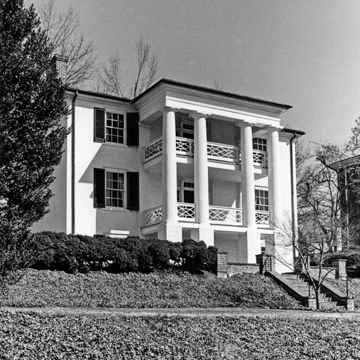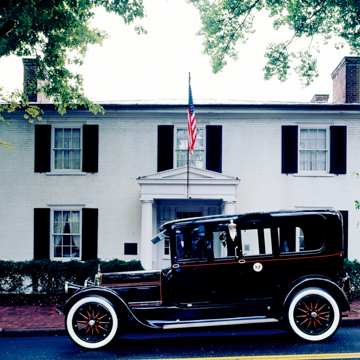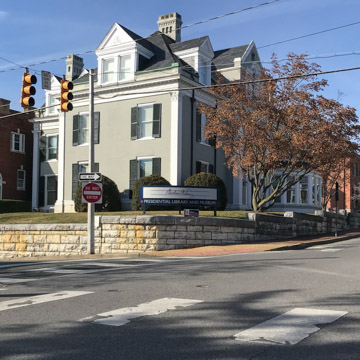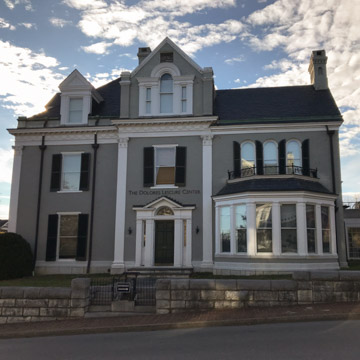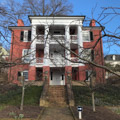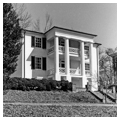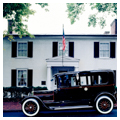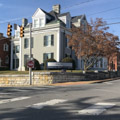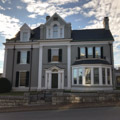This complex gives insight into the life of President Woodrow Wilson. In 1856 the Reverend Joseph R. Wilson was serving as pastor of the First Presbyterian Church when his son Woodrow was born here in the church's manse, as the house was called. The Wilson family stayed for one more year before moving to Georgia. The two-story, red-painted Greek Revival brick house on a raised basement has an impressive three-story, four-columned portico on its garden side, which originally was the main facade. The house with its low-hipped roof and four interior-end chimneys is now entered on the street side through a one-story, one-bay pedimented portico with Doric columns. The museum is housed in a renovated Chateauesque house adjacent to the birthplace and includes exhibits that explore Wilson's life and presidency.
For the gardens, Richmond landscape architect Gillette created two terraces, the lower of which features boxwood-lined bowknot beds, the only bowknot garden he created. Griswold expanded the gardens with a brick terrace, and Favretti added a forecourt, a lawn, and walkways linking the museum and the gardens. The Garden Club of Virginia restored the gardens in 2008.





















